At the KWPN stallion show I was lucky enough to interview the head of the dressage commission, Bert Rutten, not once but twice. Lucky because as you will find out soon, the second time round produced some great insights into dressage breeding, and the state of dressage today…
Bert Rutten is an international dressage competitor, a breeder, a trainer, and breeding expert, I started by asking him about something he had raised in our first interview.
When I interviewed you yesterday, you said that the greatest indicator of whether a stallion would produce Grand Prix horses, was if the stallion had, himself, competed Grand Prix. At three in the morning I started turning that one over in my head, and wondering if you meant the stallion had to be a Grand Prix star, trying to remember stallions that were Grand Prix stars, the only two of recent times were Totilas, who has already produced Grand Prix progeny, and Damon Hill, who has produced just three Grand Prix horses, one star, Daily Mirror… That raised the question, does the stallion have to be a Grand Prix star, or ‘just’ a horse that competed Grand Prix…
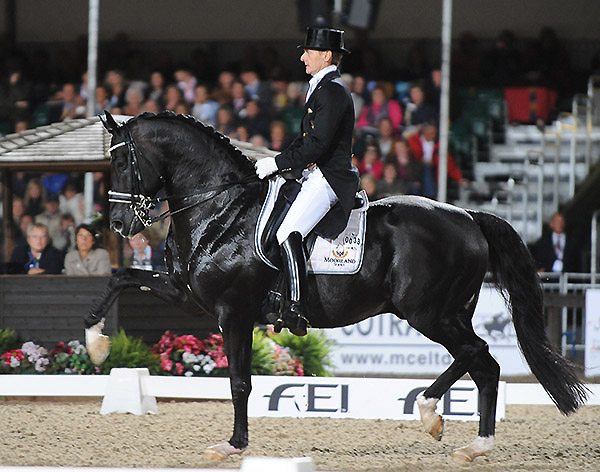
Totilas, a stallion star in the arena, at Windsor in 2009
“There’s others, Glamourdale, Hèrmes, Don Schufro, Donnerhall…”
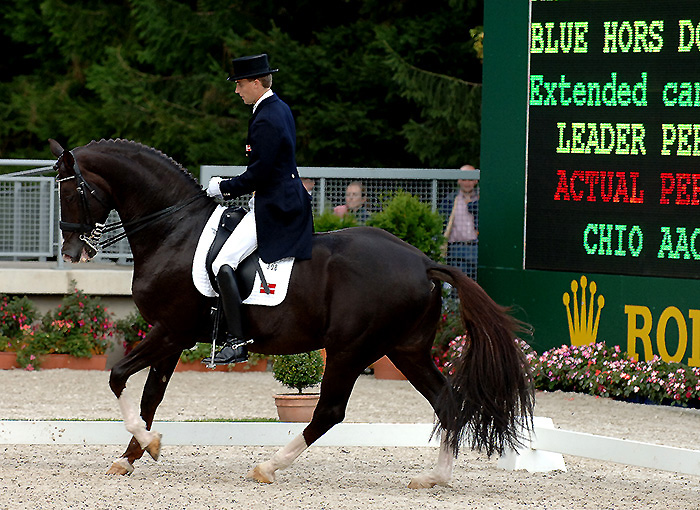
Don Schufro, international competitor
Don Schufro was good but not a star, and Donnerhall was always a solid team horse rather than a brilliant individual. Jazz the same…
“There can be only one that is ‘the best’, but the fact that they are in basically the top group of the world, which means nowadays when you are in the first ten even, I would say the first twenty of the world, you have a top performer.”
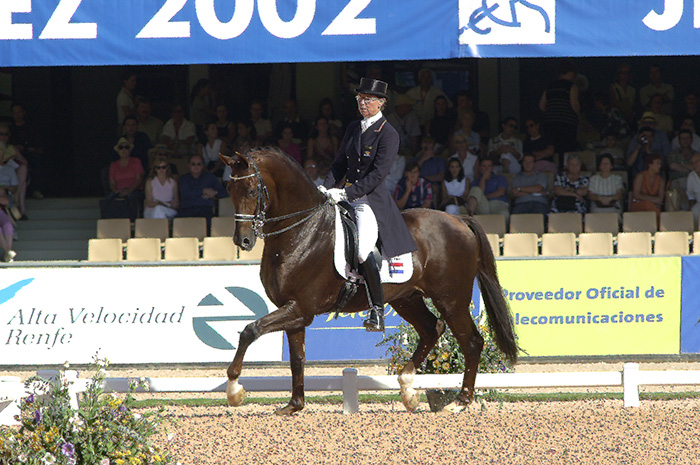
Jazz and Tineke Bartels, team members at the WEG in Jerez
But if we look at the result at the WEG in Jerez, Jazz wasn’t in the top ten, not in the top twenty (29th), and yet he is one of the great dressage sires…
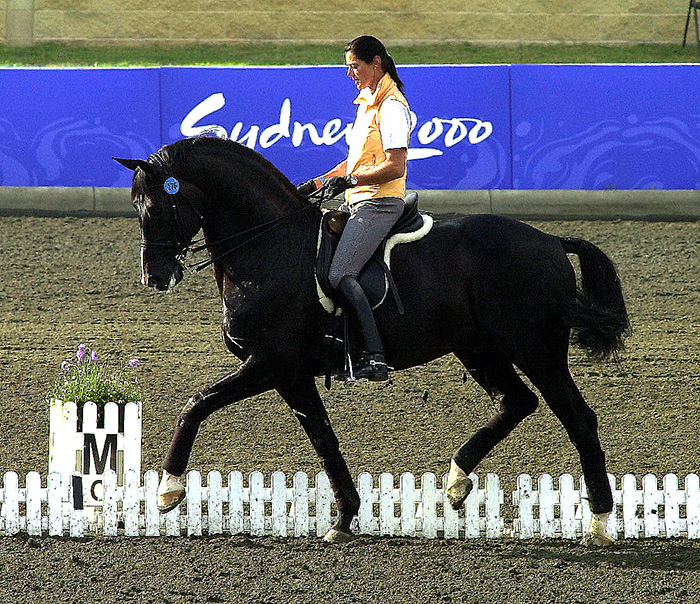
Ferro and Coby van Baalen warming up at the Sydney Games – one of the stallions that made Dutch dressage…
“Okay but then we look to Jazz, Gribaldi, Ferro, stallions that made the Dutch horse what it is today. They were of a great influence and they were all Grand Prix horses, not all top Grand Prix horses, but the fact they end up in Grand Prix, that also tells you something about their rideability, they must be rideable otherwise they would not end up in the Grand Prix.”
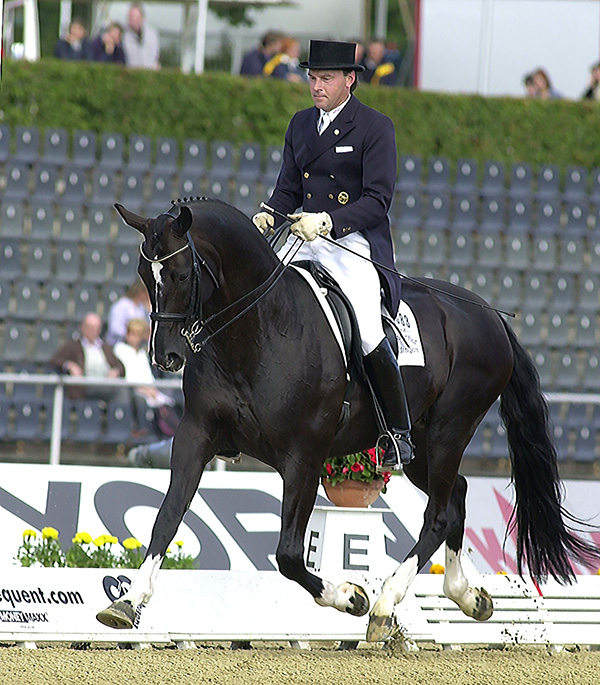 De Niro, competing at Grand Prix level
De Niro, competing at Grand Prix level
Then you get a stallion like De Niro, who was just a Grand Prix horse, Bordeaux not even that…
“They paired them up with the right mares and they have produced really nice products and made a step forward. Maybe it was their character, and not so much a talent for piaffe, passage, but little bit, step-by-step you will improve with stallions that have done Grand Prix themselves, I am convinced of it. The same as in jumping, the same as in racing, the same as in cutting horses, when they have done it themselves you see the result. In jumping now there are hardly any sires that haven’t jumped.”
The jumping breeders are much more conservative, they want to see a mature stallion that has jumped and jumped, but the dressage breeders flock to the fanciest three-year-old at the licensing…
“Yes, but part of that is that dressage breeding is actually a very new process. We started in 2006, so we are in the second generation now. It was in 2006 that we started to specialise, to breed specially for dressage horses, that’s only from 2006, okay the odd breeder by himself started to specialize, but the KWPN officially started to specialise in 2006 and to improve, they wanted to keep the generation interval as small as possible – so use the young stallions, get better every generation. Which they did, but when you look now it is getting more and more difficult to make it better every generation. And what you want is more talent for piaffe, more talent for passage, for the specifics of dressage, not only the movement. What we want now is horses with an easy canter, for easy changes, easy pirouettes, that really can sit on the hind leg, that can collect in an easy way. Like I said in the conference, almost with a loose rein, we have to get away from riding horses under pressure.”
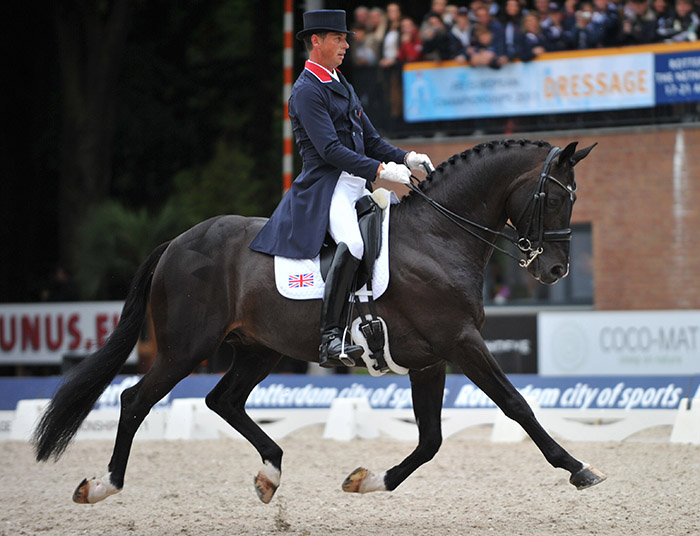
Carl Hester and Uthopia on the way to a win at the Rotterdam Euros, but not under pressure…
“It’s not that every horse that goes under pressure is the fault of the rider. We know some horses are very tense, and they have to learn, so it’s not always the rider’s fault. But in breeding, what I think we have to aim for, is a breeding stallion that does it easy, that in his character is really easy, that can collect easy, it makes it easy also for the top rider.”
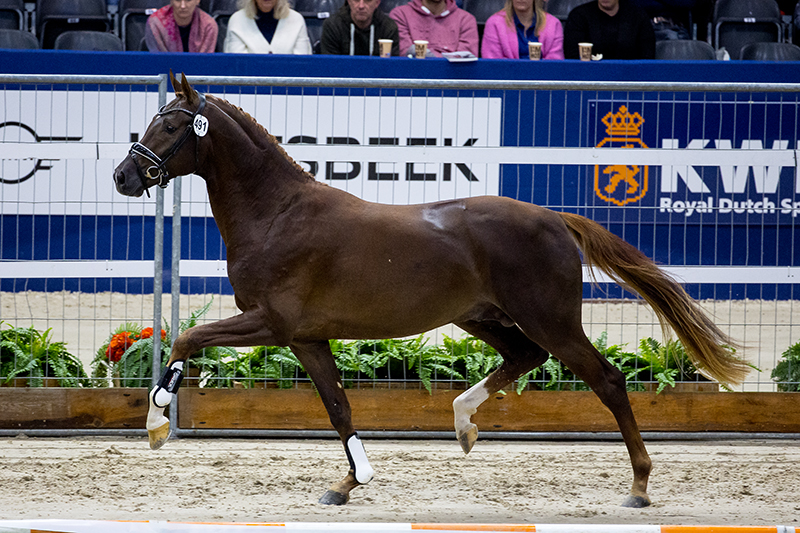
L’Avenir, not necessarily the qualities of rideability…
I was talking to Sönke Rothenberger about the premium stallion, L’Avenir, and I said, you’ve never seen Weihegold trot like that, and he said, yes but I am not sure I want to sit on a trot like that… Is it a problem that some of the qualities that make a star at the licensing are not necessarily the qualities of rideability that big tour dressage needs…
“That’s why we have the performance test at Ermelo, but as a trainer, I can tell you when a horse goes nicely, in an honest way, back to front, over his back, then they become comfortable. Some horses are more comfortable than others, but when they are over the back and they don’t run away from the rider, then you can sit on them.
You’d like to sit on that huge trot?
“I would like to try it, why not?”
He was fabulous, he owned the arena from the moment he walked in…
“But that is not a trot you want when you are riding a young horse, he will also have to learn to relax, to learn to go forward and downward, to follow the hand, and come back. This is nice what he is doing now in freedom and a little bit in hand but eventually he has to go through the whole process of becoming a Grand Prix horse.”
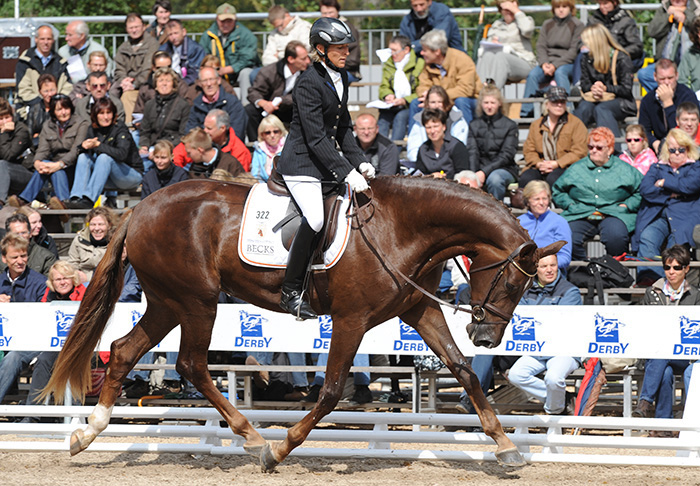
Ingrid Klimke and Damons Divene – by Damon Hill – demonstrate a young horse stretching…
Do you think we are coming back to a more natural way of going in the Young Horse classes – for a while there they were starting to get very ‘spectacular’…
“I still think that the spectacular young horses get too high marks when they go spectacular under the pressure of the rider. A young horse should have much more freedom. Look how it is with a lot of the young horses when they do what they call uberstreichen, yes, they go up with their hands but the rein stays tight, it’s a joke.”
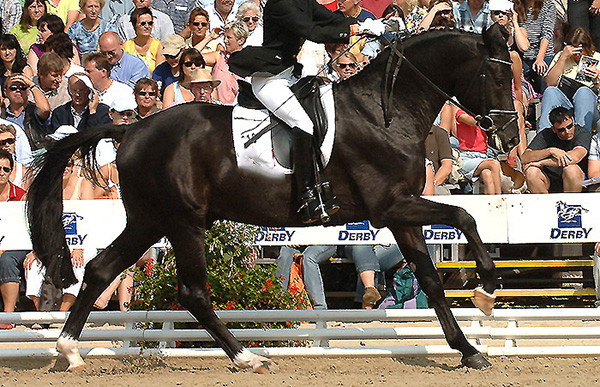
Give? It’s a joke…
You think we should be looking for a more soft, more natural way of going in young horse classes?
“Yes, and the public should be educated that we have to get away from the spectacular movement. When it’s natural it is fine by me, but it has to be natural.”
I think it’s hard in Holland because the spectators love spectacular. At the World Championships in Ermelo, I saw only two really unpleasant spectacular tests, both from Belgians, and those were the tests the crowd cheered and clapped…
“I wasn’t there so I can’t say.”
But Dutch spectators have grown up watching those harness horses and they are the most spectacular of the spectacular…
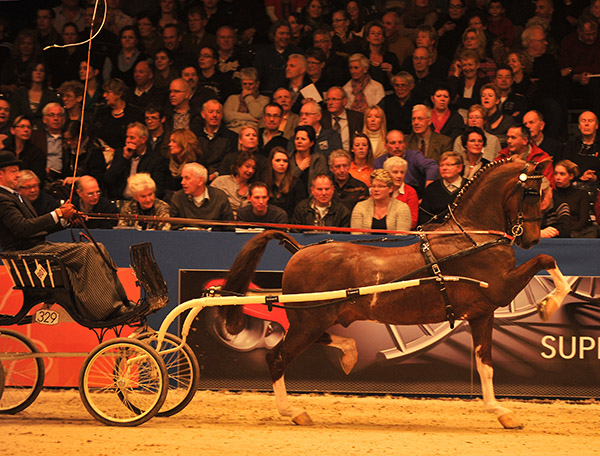
“It’s also what the international judges promoted for a while, and that’s changing now – slowly. That’s how it changed with the spectacular movement, it changed slowly from in the old days when horses had to be really in front of the vertical, then they started to be more cranked in, now they realise they went too far. It goes in waves, now I think we have to go back to more the classic way.”
That started with Carl and Charlotte – pic is the presentation at London in 2012
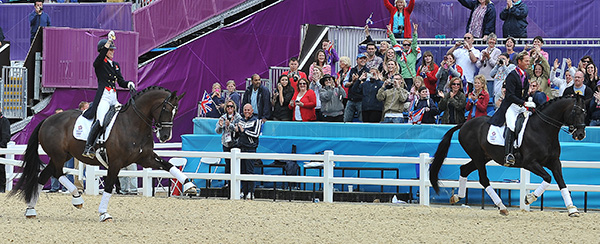
“Yeah, they ride in a more relaxed way.”
I get a little worried with Glamourdale and Hermes, they are not so relaxed, those two horses?”
Bert Rutten is one of those rare people who looks you directly in the eye, but there is a dry wit lurking behind that gaze…
“They are nice breeding stallions…”
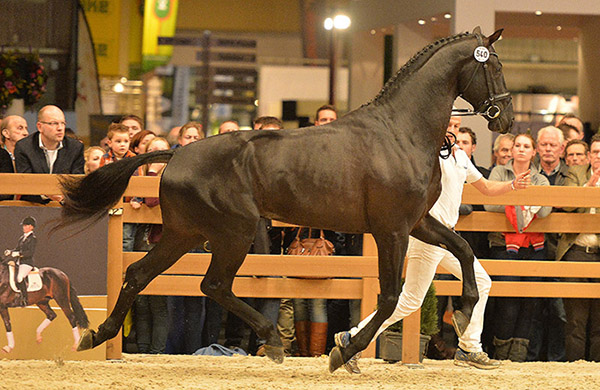
Glamourdale at the licensing…
Ends, and thank you Bert Rutten for your time and insights…



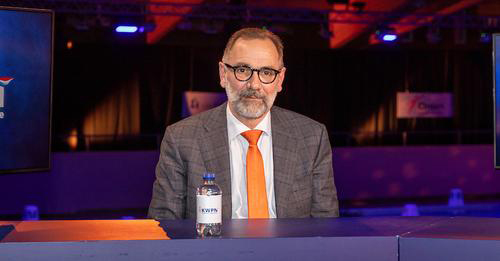
Great article very interesting and informative
Really enjoyed this interview !!!
The Sport just has to find a way to insure the spectators are seeing relaxed & content looking horses competing in all levels !!!Ka